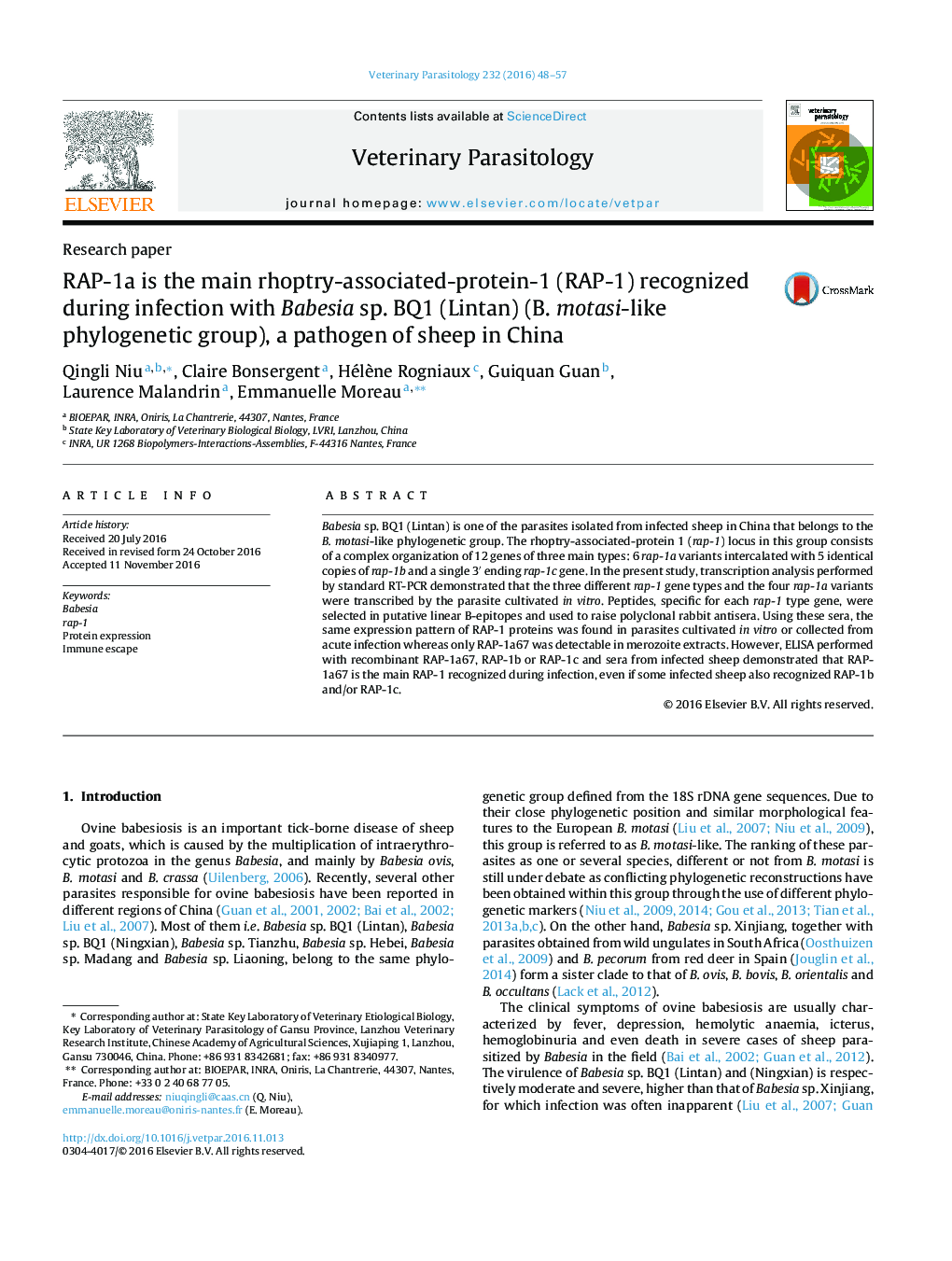| Article ID | Journal | Published Year | Pages | File Type |
|---|---|---|---|---|
| 5545911 | Veterinary Parasitology | 2016 | 10 Pages |
â¢Three different rap-1 gene types and four rap-1a variants were transcribed by the parasite cultivated in vitro.â¢Putative B-cell epitopes are located mainly in the C-terminal region of the RAP-1 proteins.â¢Only RAP-1a67 was detectable in merozoite extracts.â¢RAP-1a67 is produced precociously and at a higher level than RAP-1b and RAP-1c during Babesia sp BQ1 (Lintan) infection.
Babesia sp. BQ1 (Lintan) is one of the parasites isolated from infected sheep in China that belongs to the B. motasi-like phylogenetic group. The rhoptry-associated-protein 1 (rap-1) locus in this group consists of a complex organization of 12 genes of three main types: 6 rap-1a variants intercalated with 5 identical copies of rap-1b and a single 3â² ending rap-1c gene. In the present study, transcription analysis performed by standard RT-PCR demonstrated that the three different rap-1 gene types and the four rap-1a variants were transcribed by the parasite cultivated in vitro. Peptides, specific for each rap-1 type gene, were selected in putative linear B-epitopes and used to raise polyclonal rabbit antisera. Using these sera, the same expression pattern of RAP-1 proteins was found in parasites cultivated in vitro or collected from acute infection whereas only RAP-1a67 was detectable in merozoite extracts. However, ELISA performed with recombinant RAP-1a67, RAP-1b or RAP-1c and sera from infected sheep demonstrated that RAP-1a67 is the main RAP-1 recognized during infection, even if some infected sheep also recognized RAP-1b and/or RAP-1c.
